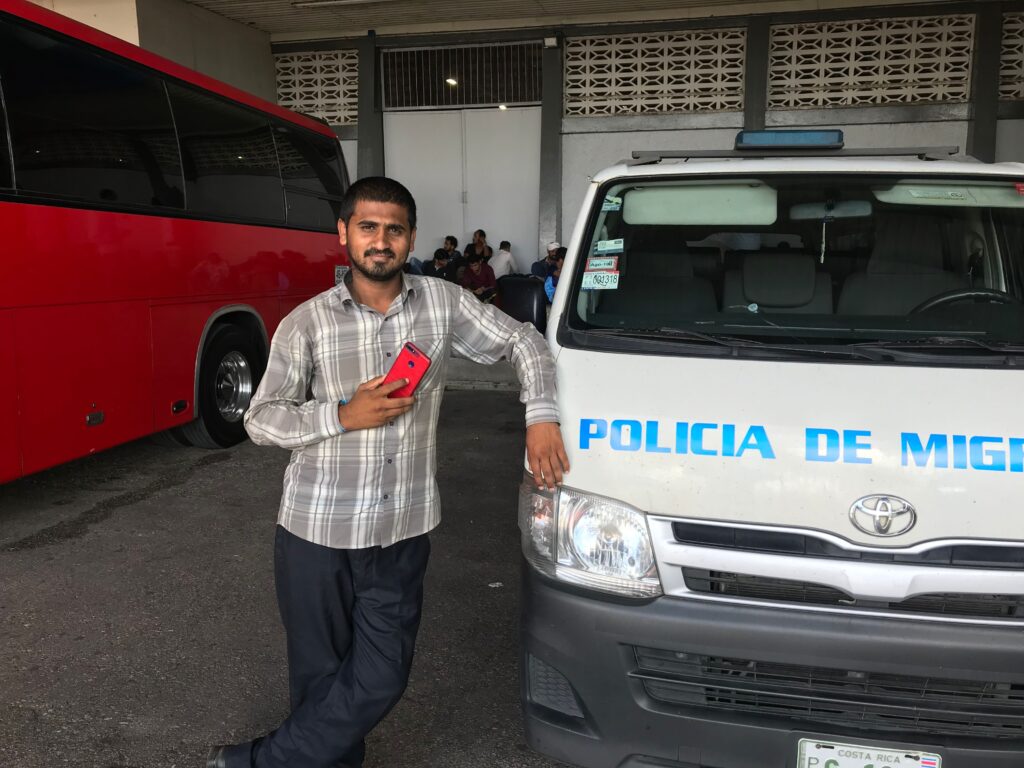How any White House can break the tsunami of global migration heading toward the southern border

By Todd Bensman as published October 7, 2021 in The Federalist
LISTEN TO BENSMAN ON THE FEDERALIST RADIO HOUR
A human migration tsunami of historic proportions – anywhere from 70,000 to 85,000 strong – is on its way from throughout the globe to the US southern border, funneling through the notorious so-called “Darien Gap” jungle route that runs out of South America into Panama and on northward to the US border.

More international migrants are crossing through the gap than in anyone’s recorded memory now, all heading to the US southern border. The Associated Press said so. Axios said so. And now, of late, on the front page of its Sunday editions, The New York Times has said so.
But nowhere in any of this profoundly belated coverage of US-bound international migratory travel through the Darien was it mentioned that Panama on the other end of it– meaning, the actual US-allied government of Panama – is itself the primary official smuggler. Nor was it ever mentioned that the US-allied countries of Colombia and Costa Rica are just as complicit in materially facilitating the movement of migrants, as a matter of government policy, ever onward out of their territories toward the American border.
Both Colombia and Costa Rica allow criminal smuggling organizations to operate mostly unfettered to achieve the national objective of clearing their own countries of a potentially expensive problem.
But with friends like these pushing 70,000-plus immigrants to cause chaos and crisis on the US southern border, as happened recently in Del Rio, Texas, and now Yuma, Arizona, who needs enemies?
And yet even at a time of epic numbers like these, the United States has never seen fit to publicly acknowledge that Colombia, Panama and Costa Rica are doing this to the American people. The American public hardly knows of it. Nor has the United States sought to diplomatically leverage any of the governments to instead disrupt, slow or outright halt the flows of people long before they reach Mexico.
This strange state of, tolerance and American public ignorance, even during the Trump administration, endures even through all three of these nations are ideally positioned as trail-route bottlenecks where new US strategies can significantly attenuate the problem if all involved simply acknowledge that it is happening and there is a political will to press for solution.
The policy of “controlled flow”
In December 2018 and again in June 2021, the Center for Immigration Studies sent me to Panama and Costa Rica, where I traveled widely documenting the international migrant traffic routes leading out of the Darien Gap as an American national security issue; at least several thousand migrants a year, after all, hailed from Islamic nations where terrorist groups operate.
On that first late 2018 trip, I was surprised to learn that both Panama and Costa Rica had for several years quietly coordinated a bi-national practice they called “controlled flow” and which I have dubbed “catch, rest, and release.”
The policy was predicated on the quite understandable idea that none of these countries wanted to bear the considerable costs or social burdens of stopping migrants already heading for the exits, blocking them or turning them back. Colombia, Panama nor Costa Rica didn’t need to, either, since most of the migrants were voluntarily leaving.
Controlled flow still works like this: Colombia allows thousands of migrants from all over the world to pool up (just as they are now) on edge of the Darien wilderness route to Panama, then tolerates a significant smuggling industry that guides these migrants by foot out through the gap into Panama.
On the gap’s other side, militarized Panamanian police collect the migrants from the trail and bring them to a series of open-door detention camps, which the migrants freely enter and leave. Having visited two, I would call these more like hospitality camps. In these, Panama provides for all basic needs for the next trip: medical treatment, showers, access to communications, money wires, food, and legal permission slips to be in Panama for up to a month.
But everyone knows they won’t need a month. The government coordinates and organizes commercial buses to drive the migrants to the Costa Rica border and drop them at the town of Paso Canoas.
Up until the pandemic, Costa Rica practiced controlled flow too in close concert with Panama; Nicaragua, hostile to Costa Rica, bowed out. The migrants would be bused to a government hospitality camp at El Golfito or to another one on the northern border in La Cruz, where smugglers were openly allowed to lurk and operate with impunity as necessary to transport the migrants through Nicaragua and to Honduras and beyond.
Costa Rica was not using controlled flow when I visited in June 2021 because the country was still under pandemic border closure, at least on paper for public consumption. But the smugglers operated in the wide open, in front of immigration police and regular police. Police officials on the border told me their orders were not to interfere, except to occasionally bust ranking smuggling kingpins.
The migrants dropped off by Panama in Paso Canoas would find taxis and buses to the far northwestern town of La Cruz or the northeastern town of Los Chiles, where phalanxes of taxi smugglers would fish them from bus stations and take them to smuggling groups in Nicaragua, often paying off Nicaraguan soldiers who were part of the industry. The smuggling industry was allowed to thrive to such an extent that an unofficial smuggling town called La Trocha sprung up to handle much of what comes and goes between the two nations.
The policies practiced by these this trio of countries are pragmatic and clearly in their own national interests. But those interests are in conflict with the national security interests of the United States and its right to not always have to contend with huge numbers of illegal immigrants coming through the Darien Gap.
Time to throw a wrench into the conveyor belt gears?
Mexico serves as a time-honored example of how the United States can and does diplomatically insist, with carrots or sticks, that it help control illegal immigration from its southern border toward the US southern border. Donald Trump pressured Mexico to deploy National Guard on its border and stop caravans from entering. Joe Biden has done the same.
On just national security grounds, I have advocated for several years that the United States use its diplomatic muscle to force Colombia, Panama and Costa Rica to reverse course.
My book about this form of migration, America’s Covert Border War, the Untold Story of the Nation’s Battle to Prevent Jihadist Infiltration (page 227), recommends that the United States negotiate an end to controlled flow policies and develop in its place a scheme to fund passenger flight repatriations directly from those countries.
As a deterrent, there is perhaps no more powerful a tactic than repatriating immigrants back to home countries or designated safe third countries. We saw just how powerful a deterrent air repatriation is during the Del Rio migrant camp episode, when President Biden ordered that at least 2,000 Haitians there be flown back to Port-au-Prince. Thousands promptly fled the camp to get away from even the prospect, as I reported, and all those on their way to it suddenly stopped in their tracks and turned around.
No one should expect these countries to fund an American interest out of their treasuries. So the United States would need to fund detention facilities, legal processing infrastructure and especially air transport to origin countries.
It seems doubtful that the Biden administration would have the interest or diplomatic moxy to pull off such a strategy. But if a goal is for less illegal migration to come from all points of the globe, a meeting among friends will have to happen sooner or later.